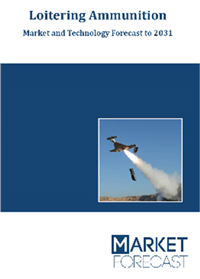Having been on the side of military capabilities for several years, the war in Ukraine and previously in Syria have put loitering munition at the forefront. Combining the advantages of a UAV that provides ISR while loitering above an area and the strike capabilities of a precision-guided weapon, they bring many advantages in modern operations.
Loitering munition will complement rather than replace the artillery and infantry heavy weapons systems. Having returned to near-peer or peer-to-peer conflicts, where long-range fires and ISR are key operational elements. Such artillery systems have only been available on the brigade or division level, requiring separate ISR capabilities for these units to locate, identify and engage targets. What the introduction of loitering munition does is that it brings those capabilities to the battalion level making it more effective and flexible.
Nevertheless, someone should not only expect changes in the capabilities of ground forces, but also in the naval domain. Loitering munition will be an important addition to the weapons and sensors deployed by surface units, especially those operating in the littoral areas. Similarly, it should also be expected that loitering munition will be soon deployed by aerial, manned or unmanned, platforms. However, their market proliferation pace is not expected to be as fast as for the ground-launched ones.
The market is currently facing challenges due to the disruptions in the supply chain, the cost of raw material and the lack of production capacity from key manufacturers. That will change in the next couple of years and the market is expected to become even more fragmented and competitive as key countries are expected to develop their own indigenous solutions, rather than importing them from abroad. Europe has been one of those areas, mostly relying on the products from early entrants to the market, that is the US and Israel.
Finally, with the exception of the US Marine Corps, which has defined the way that loitering munition will serve its doctrines and therefore established a table of organization and equipment, the rest of the armed forces around the world are still in the definition phase.
Market Forecast provides a detailed analysis of the Loitering Munition Market to 2031 in terms of technologies, the market landscape, procurement programmes and opportunities for manufacturers and suppliers.
Covered in this report
- Technological background for the development of loitering munition.
- Definition of the advantages, trends, opportunities and challenges of the market, as well as how loitering munition will fit in or impact force structures
- Presentation of the market landscape in key countries
- Presentation of the procurement programmes in major markets
- Profiles of leading companies
- Market share forecasting for all segments up to 2031
- Market share assessments per segments and regions up to 2031
Segmentation
The market in this study is segmented by Region, Range, and Launching platform.
Geographic coverage
- North America
- European
- Asian-Pacific
- Middle East and North African
- Rest of the world
Loitering munition market per range
- Short
- Medium
- Long
Loitering munition market per launching platform
- Ground
- Naval
- Air
Reasons to buy
- Insight on the elements comprising a loitering munition, which are potential opportunities for lower tier suppliers
- In-depth understanding of the factors affecting the market such as defence spending, tactical and operational requirements, challenges faced by manufacturers that could delay the introduction of loitering munition to a military force, among several others
- Outlining of the disruptions impacting the market and how these could become an opportunity in this quick changing domain
- Understanding of the wider platform market landscape and its relation to the loitering munition sector, how stakeholders can cooperate to offer integrated, end-to-end solutions



